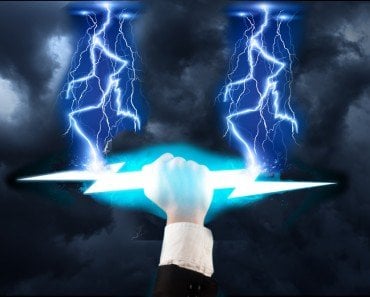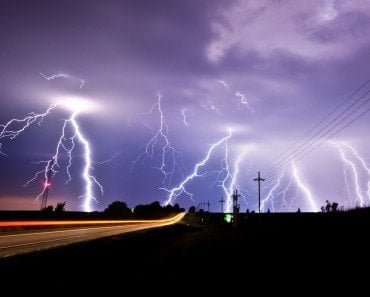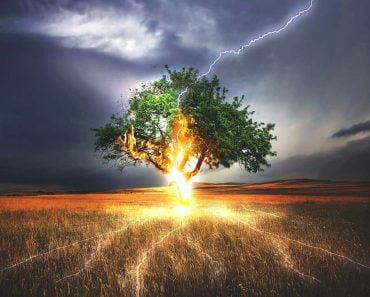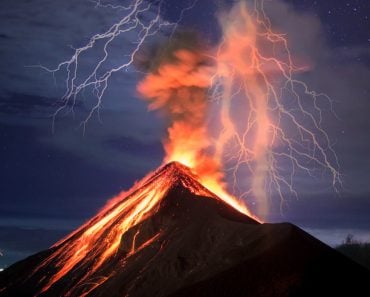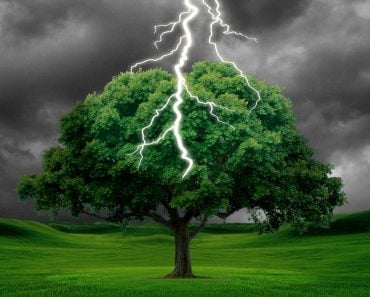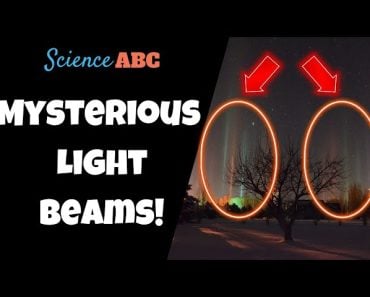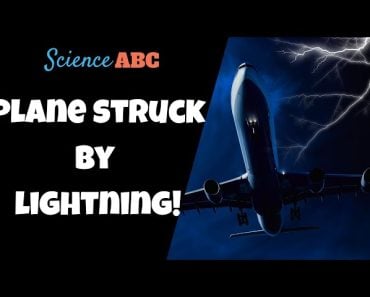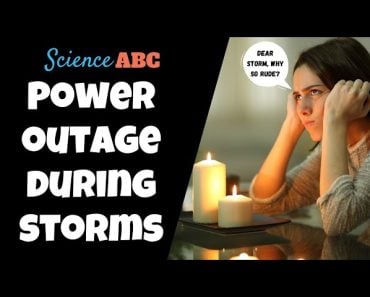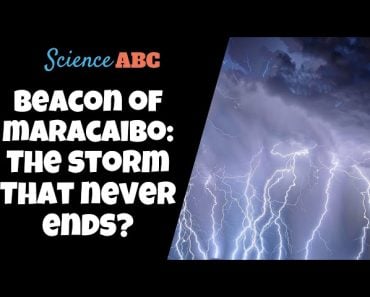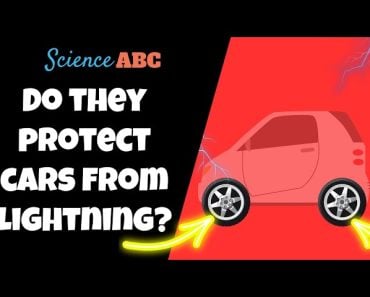Table of Contents (click to expand)
Lightning is in a zig-zag shape because it follows the path of least resistance. Lightning is created when the buildup in electrical charge is enough to create a channel between the two opposite-charged particles. In the moment when these two charges connect, a bolt of lightning is created. The path of least resistance is not always a straight line, so lightning will often zig-zag.
Every time a storm begins rumbling in the sky, we on Earth are quite lucky to look up and see a sky full of lightning. Sometimes, you will see bolts of lightning even when it’s not raining. The sharp branches of lightning strikes look like an arsenal of sharp weapons stabbing the sky, all at the same time. For some, the image is majestic, while for others, it is utterly terrifying. No wonder people sometimes shudder when they hear a thunderclap!
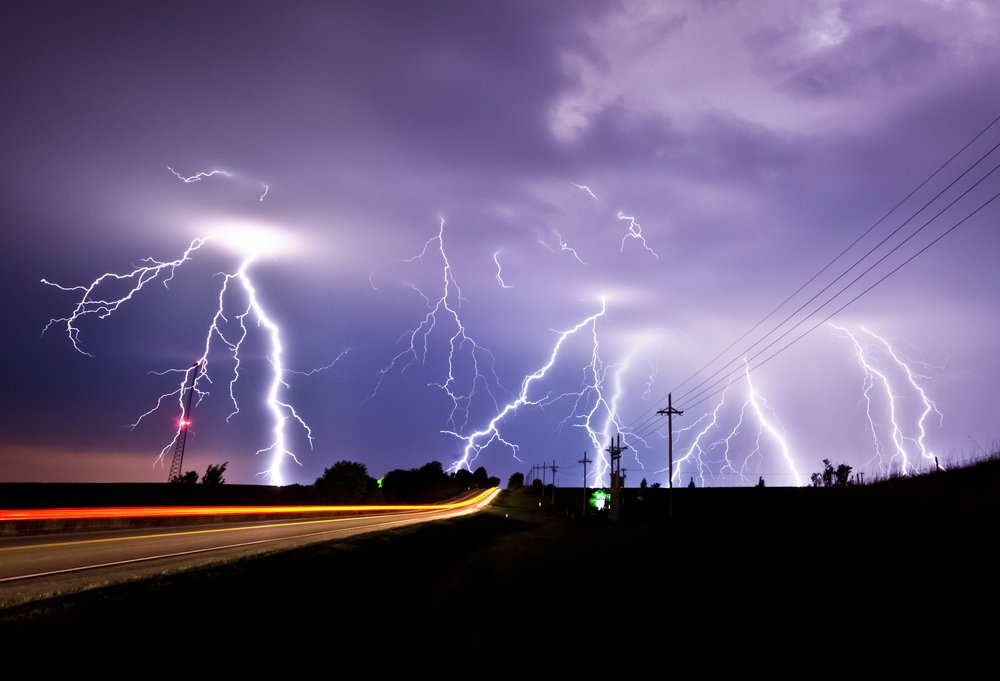
The shape of lightning is what intrigues most people (myself included!). Why is lightning in a zig-zag shape? Why don’t you ever see lightning in a straight line, a triangle, or even a circle, for that matter? Why is the ‘branched shape’ what we see every time lightning cuts through the sky?
Recommended Video for you:
What Is Lightning?
Lightning is basically an electric current (yes, like those we have in our houses, except lightning is thousands of time more powerful and dangerous). The temperature of lightning is around 27,000 degrees Celsius, which is nearly 5 times hotter than the surface of the Sun! (Source) Lightning is a type of electric current that, most of the time, forms in the clouds, but occasionally forms between the cloud and the ground, resulting in a lancing line of lightning that we can see.
The upper part of a cloud is at a very low temperature, i.e., below the freezing point of water. Therefore, water vapor in the clouds turn to ice. As the cloud gets bigger, these small bits of ice begin to bump into each other, resulting in the build-up of an electric charge. The lighter and more positively-charged particles remain at the top of the cloud, while the heavy negatively-charged particles (electrons) remain at the bottom of the cloud. A bolt of lightning is created when the buildup in electrical charge is enough to create a channel between the two opposite-charged particles. In the moment when these two charges connect… Voila! A brilliant lightning strike!
Why Such A Weird Shape?
Why can’t lightning just be in a plain, straight shape?
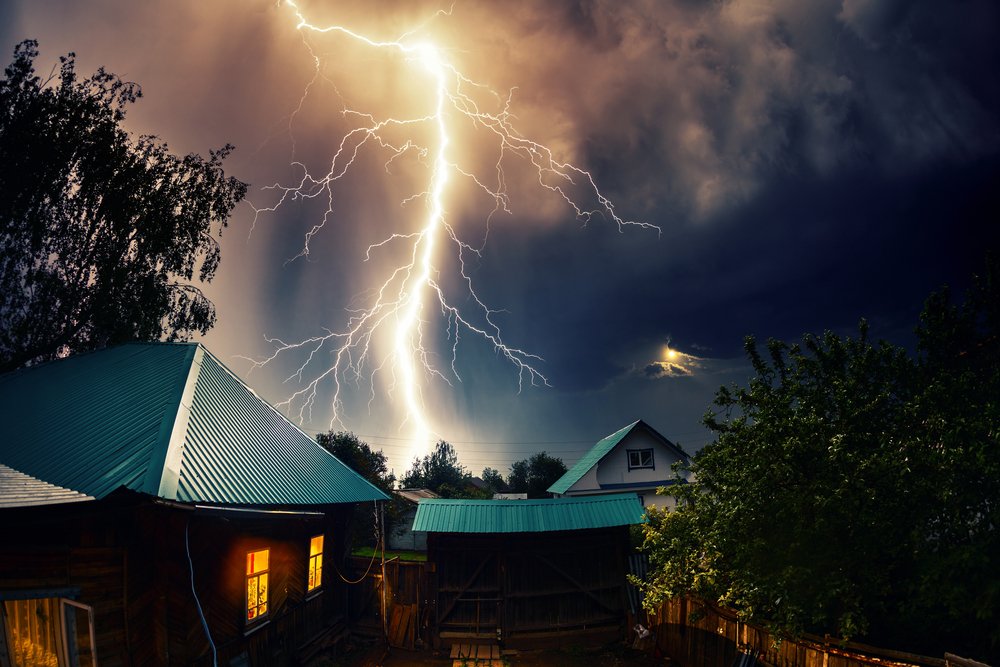
Just like humans tend to do, lightning likes to follow the path of least resistance, i.e., the path where there would be a minimal opposition to its flow.
To understand this, imagine that you have a heap/mound of dirt or sand. Now, when you pour water on it, right at the peak of the mound, how does the water flow downward? Does it always flow in a straight line? Is there a specific pattern to which it adheres?
No, of course not. There is no specific pattern or path that water takes to come down. The same thing is true in the case of lightning.
Air is made up of many things, including certain gases, dust particles, pollutants, and other substances. However, this mixture is not homogeneous, meaning that it is not uniform. Air is uneven and irregular, which is why when lightning is formed (due to the potential difference of the charges), it makes sure that the path it chooses is clear, or has the least possible resistance.
The path it chooses doesn’t have to be a straight line (remember, a straight line means ‘the least distance’ and not ‘the least resistance’). In fact, you will never see a straight bolt of lightning, at least not in the real world.
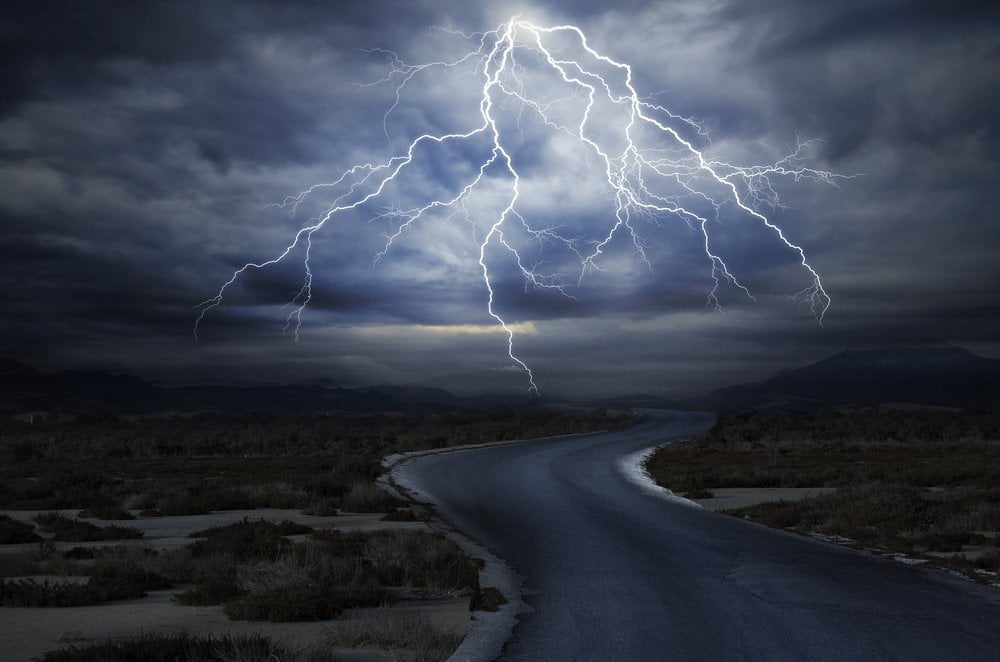
Does Lightning Travel Up Or Down?
This is another question about lightning that seems to confound many people, so just to clarify, lightning actually travels in both directions.
The positively charged particles from the ground begin to move upwards through the air to meet the negatively-charged particles that are racing down from the bottom of the clouds. Therefore, you could say that the whole process of lightning starts from the ground and moves up, but the whole process is initiated by the presence of an electrical charge in the clouds.
Lightning is a process defined by the flow of charged particles in both directions – downwards and upwards. That is the reason why lightning always appears to be flickering.
In short, it would be fair to say that lightning travels both ways.
Also, don’t forget that lightning looks for the path of least resistance, so anything on the ground, such as tall buildings, towers, trees, or even humans may provide that path of least resistance for a strike. Given that fact, it would be a good idea to stay indoors when there are lightning strikes crackling all around you.
Update: As it turns out, lightning strikes are much powerful over sea than land. According to a study published in Geophysical Research Letters, lightning strikes formed over sea water tend to be more powerful than the ones that occur over land. The findings reported in the study suggest that people living on or near the ocean may be at greater risk for lightning damage if storms develop over oceans and move on-shore.


